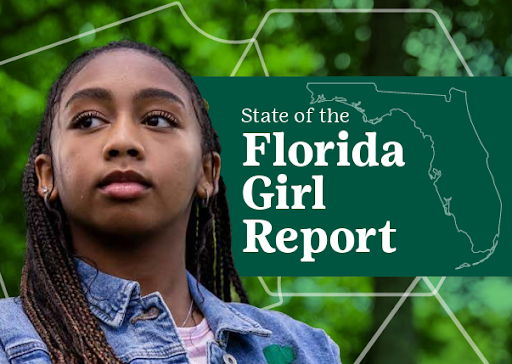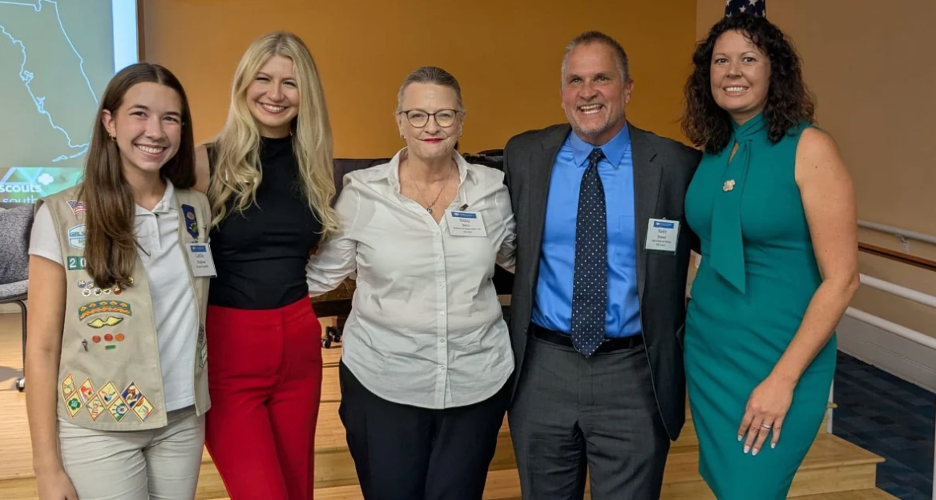Original Story at Stet News
Half of Florida girls are depressed, new report finds
October 20, 2025 by Holly Baltz
A big thing and a little thing you can do to help.
Florida Girl Report imageFlorida girls need help in all aspects of their well-being, says a new report, “State of the Florida Girl.” (Image: Girl Scouts of Southeast Florida)

Florida girls need a trusted adult who isn’t a parent to help them navigate the turbulence of social media and for many, trauma at home.
This was a key finding of a report commissioned by the Girl Scouts of Florida Association. Last week, I moderated a panel sponsored by the Palm Beach County League of Women Voters in West Palm Beach to figure out how adults can help.
The report’s authors found disturbing statistics but also uncovered good news.
Here are some key takeaways:
Emotional wellness: Half of high school girls are clinically depressed, meaning they have felt constantly sad and/or hopeless for two weeks or more. One-quarter considered suicide, and 11% tried. In the past decade, the number of girls contemplating suicide has increased by 60%.
The good news: Though Florida school districts don’t have enough counselors and nurses, Palm Beach County is making great strides,said panelist Elle Harrigan, chief advancement officer for the Girl Scouts of Southeast Florida.
Physical health: Distorted body views keep plaguing middle and high school girls. Fewer fit the medical definition of obesity, but more describe themselves as overweight. This was the opposite of boys. Encouraging weight loss, however, could be risky because deprivation of food can lead to eating disorders. Healthy eating, exercise and sleep habits are key.
The good news: The number of uninsured girls decreased over the past decade by 3%.
Academic performance: Two in 5 girls tested below grade level in reading and math. And test results have been slipping: 13% fewer met the standard in the year after the pandemic.
The good news: 90% of girls and 85% of boys graduated from high school that year.
Social well-being: Twice as many girls as boys live with four or more kinds of trauma – including abuse or neglect. Other traumas include a parent in addiction or in prison and not enough food to eat. The reason the number is important is that people who experience at least four kinds of trauma are up to 12 times more likely to suffer from addiction, cancer, diabetes and pregnancy complications.
The good news: The teen birth rate in Florida has decreased by 50% over the past decade.
Solutions: The most prevailing idea discussed was providing outside support for girls, especially an adult mentor to talk to on a regular basis.
So what can we adults in Palm Beach County do now? Volunteer. Offer help to young people.
You can learn more at nonprofits such as Junior Achievement of the Palm Beaches, NAMI Palm Beach County and Take Stock in Children. Or just Google “mentoring Palm Beach County.”
Or if you see a girl (or boy) at Starbucks one day, give them a smile and ask how they’re doing. It can go a long way, suggested Harrigan.

State of the Florida Girl report panel in West Palm Beach, FloridaHolly Baltz of Stet News moderated a discussion last week about Florida’s girls. The panelists were, from left: 10th-grade Girl Scout Caitlin O., eighth-grade teacher Annie McGrath, Baltz, Keith Oswald from the school district and Elle Harrigan of the Girl Scouts. (Photo: Palm Beach County League of Women Voters)
About 4.2 million children under 18 live in Florida. In ethnicity, a third are Hispanic.
One-quarter of Florida children are two or more races with whites at nearly half, Black children at 19%, 8% other race, 3% Asian-American and 1% Native Americans.
Information for the report came from the U.S. Census, the Centers for Disease Control and Prevention and the Florida Department of Education among many scholarly journal articles. Where it was possible, the author extracted statistics about girls alone. The report was reviewed by 10 major universities, including the Universities of Florida and Miami and Lynn University.
Holly Baltz is an editor and a reporter at Stet News. Her 40-year career of award-winning journalism included 34 at The Palm Beach Post. Holly lives with her husband in Lake Worth Beach.